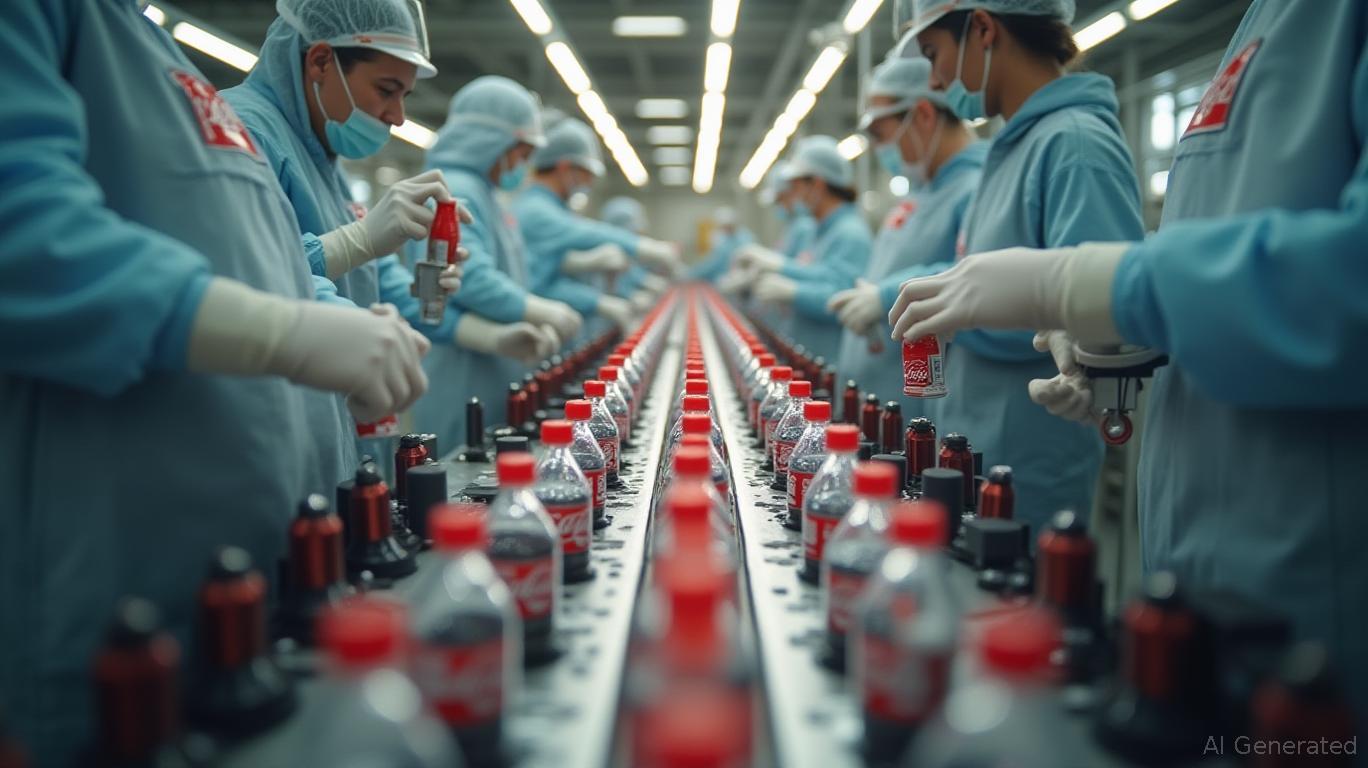Bottled Resilience: Navigating Coca-Cola's Supply Chain Crossroads in a Volatile World
The beverage industry's golden era of unchecked expansion is fading. As Coca-Cola—the world's largest non-alcoholic beverage company—faces escalating supply chain disruptions, investors must confront a critical question: Can the soda giant's operational agility outpace the storms, floods, and regulatory headwinds battering its global network? With Brazil's recurring supply chain crises and emerging market vulnerabilities at the forefront, the answer hinges on whether Coca-Cola's $7 billion bet on Brazilian infrastructure and its pivot to sustainability can transform risk into opportunity.
The Brazil Crossroads: Floods, Factories, and Fiscal Fortitude

Coca-Cola FEMSA's Porto Alegre plant, a linchpin of Brazil's beverage supply chain, has become a microcosm of the company's broader resilience challenges. Floods in May 2024 submerged the facility for weeks, halting production and forcing reliance on alternative supply routes. While the plant was restored to full capacity by May 2025 after a $119 million modernization effort, a second flood in early 2025 reignited concerns about climate vulnerability. The repeated disruptions underscore a critical flaw: legacy infrastructure in emerging markets may struggle to withstand intensifying environmental pressures.
Yet, Coca-Cola's response reveals strategic foresight. The $7 billion investment pledged for Brazil in 2025—including 14 new production lines and a state-of-the-art plant in Uberlândia—aims to harden supply chains against future shocks. This reinvestment isn't just about rebuilding; it's a bid to dominate a market where 60% of Latin America's soft drink consumption originates.
The Contamination Conundrum: Global Risks, Local Repercussions
While Brazil has avoided a 2025 contamination scandal like the 2024 Austrian recall—where metal shavings in bottles sparked a 28-million-bottle recall—past incidents loom large. The 2006 sodium excess scandal in
Zero and the 2013 plastic contamination recall remind investors that even minor lapses can erode consumer trust.Globally, the stakes are rising. A
Emerging Markets: A Double-Edged Sword
Brazil's importance to Coca-Cola cannot be overstated. The country accounts for nearly 40% of the company's Latin American sales and serves as a gateway to the broader South American market. Yet, emerging markets are a double-edged sword: rapid growth potential is paired with heightened exposure to currency volatility, political instability, and supply chain fragility.
Consider the interplay of Brazil's 90.6% surge in Q1 2025 consumer product recalls (driven by stricter Anvisa regulations) and Coca-Cola's response. While recalls in adjacent industries like pharmaceuticals and automotive may not directly impact Coca-Cola, they signal a regulatory climate where compliance costs are rising. To mitigate this, Coca-Cola is doubling down on sustainability—investing in water preservation projects and returnable glass bottles—to preempt scrutiny and align with ESG-driven investor preferences.
The Investment Case: Risk Mitigation as a Growth Lever
Coca-Cola's playbook is clear:
1. Infrastructure Reinvention: The $7 billion Brazil investment isn't just about capacity—it's about climate resilience. New factories will incorporate flood-resistant designs and localized aluminum sourcing to reduce reliance on volatile global markets.
2. Diversification Beyond Soda: With flat soda sales in mature markets, Coca-Cola's pivot to Ready-to-Drink (RTD) alcoholic beverages and plant-based drinks opens new revenue streams while reducing reliance on traditional bottling operations.
3. Regulatory Preemption: Proactive engagement with regulators in Brazil and Europe—such as transparency around chlorate contamination risks—can turn compliance costs into competitive advantages.
A
Conclusion: Betting on Bottled Ingenuity
Coca-Cola's journey through Brazil's storms and global contamination risks reveals a paradox: vulnerability is its catalyst for reinvention. While supply chain disruptions and emerging market headwinds pose near-term challenges, the company's infrastructure bets, product diversification, and sustainability push position it to dominate a post-pandemic world where resilience is the new growth currency.
For investors, the question isn't whether Coca-Cola faces risks—it's whether its response to them will solidify its status as the beverage industry's unshakable titan. The answer, much like a perfectly carbonated Coke, is bubbling up in Brazil's factories and boardrooms.
Act now—before the next storm hits.

Comments
No comments yet